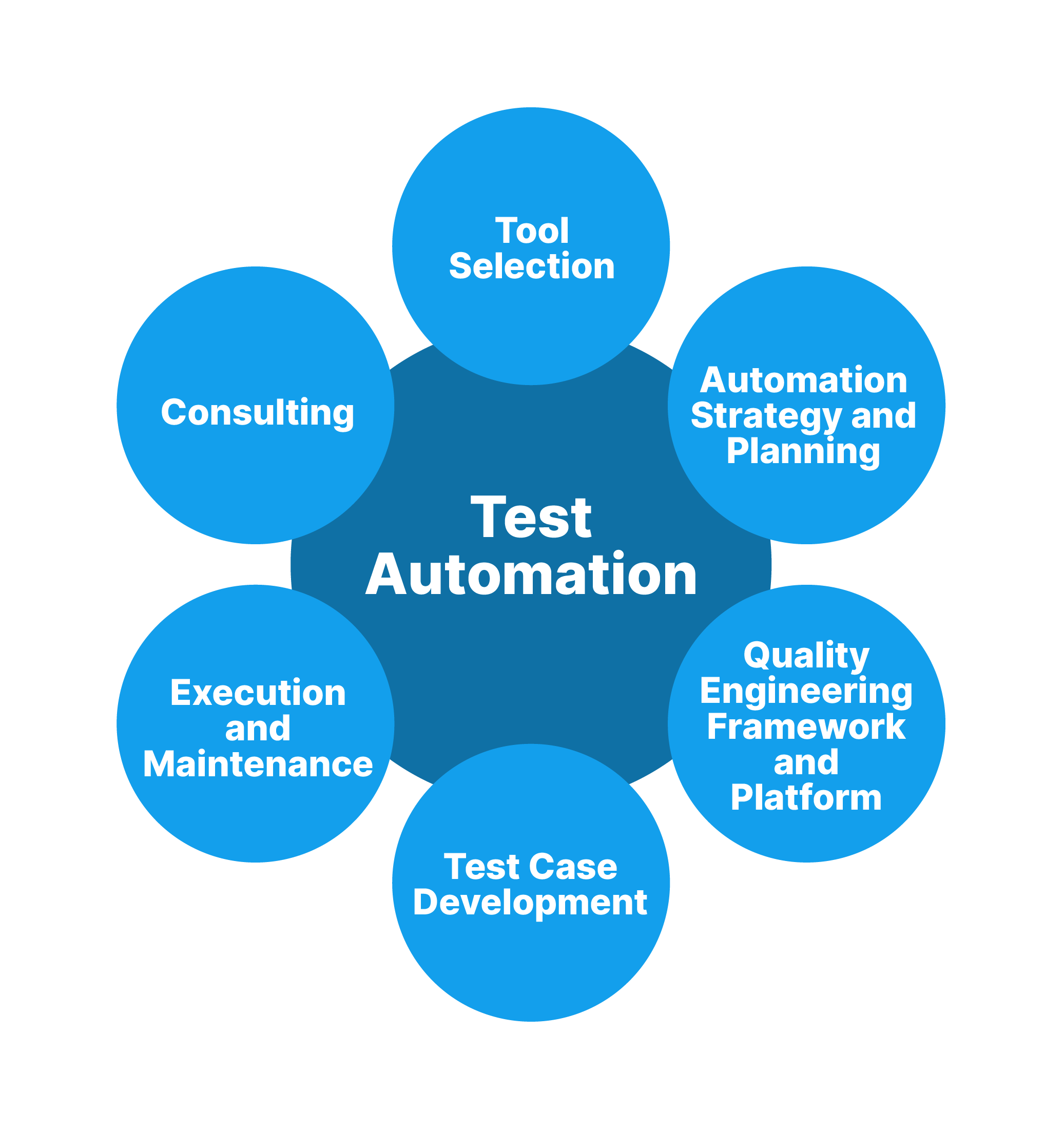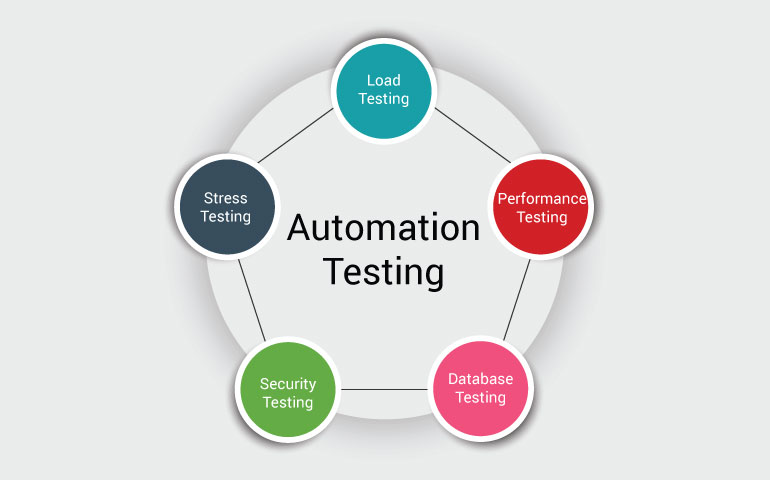Automation Testing Techniques: Best Practices for Seamless Integration
Automation Testing Techniques: Best Practices for Seamless Integration
Blog Article
Ensuring Success in Automation Examining: Key Metrics, Challenges, and Solutions Every QA Team Should Know
In the realm of software program quality assurance, the landscape of automation testing is ever-evolving, demanding a careful technique to ensure seamless operations. The journey to mastering automation testing is led with subtleties that require an eager eye for surveillance, evaluation, and constant renovation. As the industry drives onward, the quest for ideal performance in automation testing remains a constant pursuit, advising QA groups to outfit themselves with the expertise and methods important for triumph.
Relevance of Secret Metrics
Comprehending the importance of key metrics is vital for examining the performance and effectiveness of automation screening processes. Key metrics function as quantifiable actions that supply important understandings into various elements of the testing procedure, such as test insurance coverage, test implementation time, flaw thickness, and test case performance. By evaluating these metrics, QA groups can determine traffic jams, inadequacies, and areas for enhancement within their automation testing structure.
One important aspect of vital metrics is their capability to track progress and keep an eye on the overall health and wellness of the testing process (automation testing). They make it possible for stakeholders to make educated decisions based on data-driven understandings, which can result in more effective screening methods and much better source allocation. Additionally, crucial metrics can help teams established practical goals, determine the success of automation campaigns, and demonstrate the ROI of automation testing efforts

Common Obstacles Dealt With
Difficulties commonly encountered in automation screening processes can considerably impact the total performance and efficiency of QA teams. Among the significant obstacles is the choice of the right examination situations for automation. Not all test cases are appropriate for automation, and choosing the incorrect ones can lead to lost time and resources. Additionally, maintaining test scripts can be a daunting job, especially as the application undergoes frequent modifications. Examination script maintenance requires continual updates and adjustments to ensure they show the existing capability accurately. An additional typical obstacle is the first investment needed for setting up automation structures and tools. This can be an obstacle for some companies, especially smaller sized ones with restricted budgets. Furthermore, automation testing might not cover all aspects of screening, such as functionality and individual experience screening, which still call for hand-operated intervention. Getting over these challenges needs correct preparation, tactical examination instance selection, robust upkeep procedures, adequate resources, and a clear understanding of the constraints of automation testing.
Efficient Solutions for Difficulties
To resolve the barriers come across in automation testing, executing effective remedies is crucial for boosting the performance and efficiency of QA teams. One essential option is to spend in durable training programs for QA teams to ensure they have the required skills to efficiently use automation devices. Training can link expertise spaces, improve understanding of automation structures, and boost scripting capacities, ultimately leading to more efficient test production and implementation.
An additional crucial service is to establish clear interaction networks within the QA team and with other stakeholders, such as programmers and task managers. Effective interaction assists in aligning expectations, sharing progress updates, and quickly resolving concerns or obstacles that may occur during the automation testing procedure.

Tracking and Analysis Methods
Executing effective surveillance and analysis methods is essential for guaranteeing the success and performance of automation screening procedures. By making use of monitoring devices, QA groups can track the performance of examination manuscripts, identify traffic jams, and identify locations for improvement. Real-time surveillance enables quick discovery of issues, enabling rapid reaction and resolution. Furthermore, analyzing test results and metrics offers valuable understandings right into the top quality of the software being tested and the efficiency of the screening strategy.
One trick technique in monitoring and analysis is the usage of dashboards that consolidate pertinent metrics and KPIs in a visually easily accessible layout. These control panels supply a comprehensive review of test implementation standing, examination coverage, problem trends, and various other essential details. Regularly reviewing and analyzing these control panels can help QA groups make educated choices, focus on jobs, and enhance testing efforts.
Additionally, implementing automated alerts and notices based on predefined limits can enhance positive surveillance and here are the findings timely treatment. By establishing up notifies for efficiency discrepancies or examination failures, groups can resolve problems quickly and prevent them from rising. On the whole, surveillance and evaluation strategies play a crucial role in making certain the effectiveness and success of automation testing click this link efforts.
Constant Enhancement Techniques
Enhancing the efficiency of automation testing processes requires the constant refinement of techniques and strategies. One vital method to boosting automation testing processes is to carry out routine testimonials and retrospectives.

Verdict
To conclude, it is essential for QA teams to understand the vital metrics, obstacles, and solutions in automation screening to make sure success. By meticulously monitoring and examining information, implementing reliable remedies to usual difficulties, and constantly enhancing techniques, QA groups can maximize their screening processes and provide premium software program items. Sticking to these methods will eventually cause a lot more efficient and reliable automation screening techniques.
By examining these metrics, QA teams can recognize traffic jams, ineffectiveness, and locations for enhancement within their automation testing structure.
Furthermore, key metrics can aid teams established realistic objectives, determine the success of automation campaigns, and demonstrate the ROI of automation screening initiatives.
Difficulties generally see post encountered in automation screening processes can considerably influence the total performance and performance of QA groups. Automation testing may not cover all aspects of testing, such as functionality and individual experience testing, which still need hand-operated intervention.In conclusion, it is crucial for QA teams to understand the crucial metrics, difficulties, and options in automation screening to make certain success.
Report this page